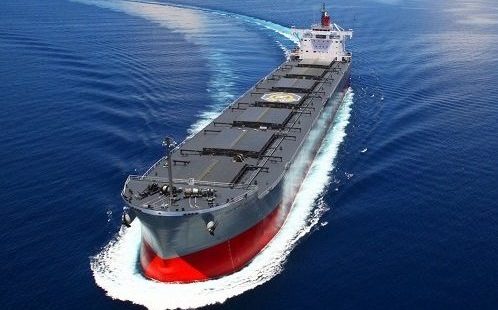Japan’s controversial EEXI proposal risks higher emissions

Sue Libenson from NGO Pacific Environment is worried about where next month’s decarbonising talks at the IMO might head.
The International Maritime Organization’s next round of talks on decarbonising shipping begins shortly on November 11.
Fortunately, there are good short-term policies on the table that can achieve up to 30% or 40% CO2 reduction by 2030 versus business as usual, while we work towards zero emission solutions.
But instead, even countries with outstanding, progressive climate records could be poised to make a momentous, unnecessary mistake.
As someone who follows both the IMO process and the global environmental and climate change movement closely, let me give folks within the shipping bubble a bit of an outsider’s perspective.
Japan’s Energy Efficiency Existing Ship Index (EEXI) proposal remains controversial among governments, but has growing support from some lobby groups. The global environmental and climate change movement sees EEXI as little more than a scam.
Why? Three reasons.
Firstly and most importantly, Japan’s EEXI proposal will not put the sector’s gigantic CO2 emissions on a downwards trajectory. It purposefully allows emissions to keep rising for another decade or two, with no end in sight. Putting existing ships under the same EEDI framework for newbuilds, the essence of EEXI, will only shave 1% to 6% off a business-as-usual growth path by 2030. Even that might be too optimistic. Because, as Japan acknowledges, all ships would only become compliant with EEXI by 2029. And, if we get to 2029 and it’s not working as planned? Too late.
Secondly, it’s a “technical measure” that regulates ships’ efficiency on paper, but does not regulate real world emissions and fuel consumption. This was precisely the flaw in the emissions regulation regime for road vehicles that enabled the “dieselgate” scandal. With high financial stakes, Japan’s “technical measure” pries open the door for shipowners inclined to be equally ingenious as the car companies in gaming such a system, leaving real world CO2 levels unchanged.
The third reason regards Japan’s related proposal allowing ships that don’t meet EEXI standards to install shaft power limitation devices. EEXI presents a broad range of compliance options, but power limitation devices would be the cheapest, and hence most popular route. Unlike vessel speed or fuel consumption, which are publicly verifiable, the question of whether a piece of software intended to regulate shaft power was switched on or off aboard a ship far at sea is hard to determine. This would make it difficult or impossible for regulators to check whether real CO2 reduction had taken place.
Japan’s failure to bring forward responsible proposals is simply not acceptable any more.
Just last month, a record 7.6 million people marched worldwide to demand that their governments “Listen to the Science” on climate change.
The science says we need to make a “rapid and far-reaching” transition in the transport sector, along with all other sectors, over the next decade. CO2 emissions need to be reduced by a whopping 45% from 2010 levels by 2030, to prevent increasingly dangerous outcomes.
That’s the requirement for global emissions, of course. But if a huge sector like shipping ignores scientific reality and keeps growing its emissions in real terms, the problem doesn’t magically disappear. It just shifts an even steeper emissions reduction burden onto countries, making their already difficult challenge harder, and pushing a stable climate out of reach.
The deadly burden of climate change is forecast to fall hardest on people in developing countries. But even Japan, one of the world’s richest and most developed countries, knows there is no hiding from climate change. We wish Japan well as it rebuilds after being hit by a round of record strength, fatal typhoons.
The shipping industry itself is not immune to stronger storms, flooded ports, and rising, warming seas.
This intersessional working group on GHGs must be the moment that governments take responsibility, and agree on measures that substantively cut CO2 in the short-term.
There are many good options on the table at IMO. Various combinations of speed limits and transparent, operational efficiency metrics based on real-world fuel consumption can achieve up to 30% or 40% CO2 reduction by 2030 versus business as usual. We can genuinely incentivize carbon neutral fuels and propulsion systems that can get us all the way to zero emissions. Let’s choose the path towards zero emissions and a stable future for us all.
